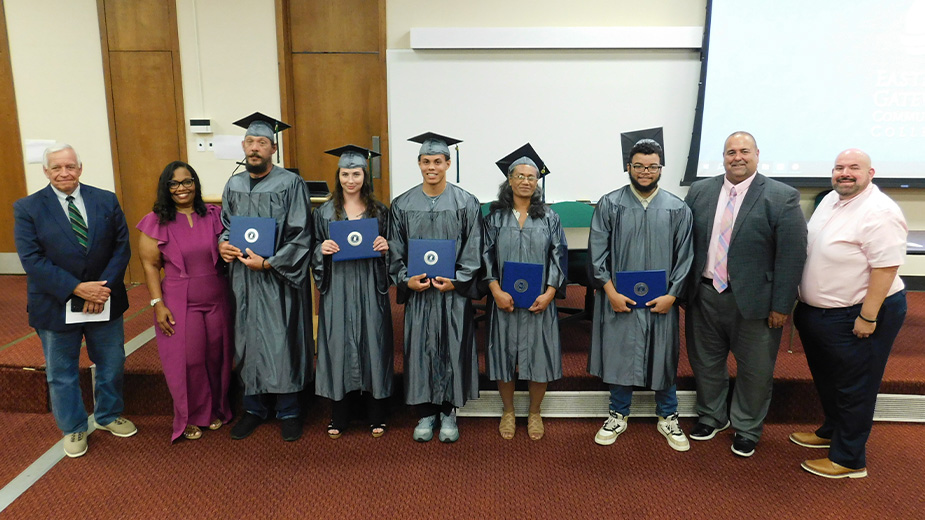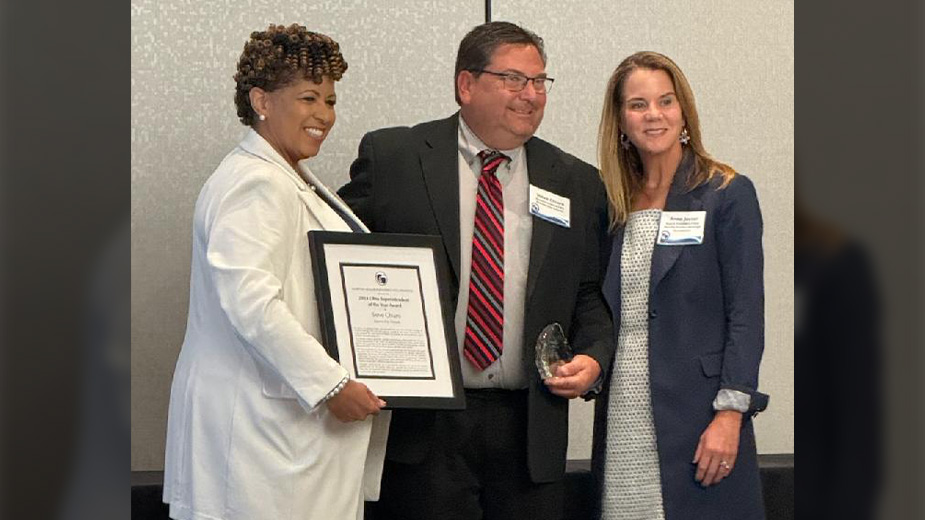YSU Receives Patent for Solar Panel Wind Deflector
YOUNGSTOWN, Ohio – Northern States Metals faced a dilemma in installing the racks it used to make that secured solar panels atop flat roofs: how to protect the panels from winds that could move them out of position if not blow them off.
“The panels could be bolted to the roof but that leads to a structural weakening of the roof,” Ganesh Kudav, a professor of mechanical engineering at Youngstown State University, explained Monday. Secure the racks with ballast and the weight of the ballast threatens the structural integrity of the building.
Northern States approached Kudav and Yogendra Panta, then an assistant professor of mechanical engineering at YSU. In February 2010, the company had donated a wind tunnel to its College of Science, Technology, Engineering and Mathematics.
Monday morning, in the room that holds the wind tunnel, Kudav showed off the solution – for which YSU earlier this spring received its second patent – a solar panel wind deflector and told how it works. He is credited as a co-inventor on the patent awarded the university.
Kudav, introduced by YSU President Jim Tressel, was joined by the interim provost, Martin Abraham, and the interim dean of the STEM college, Gregg Sturrus.
Kudav’s invention, Tressel said, “is an extraordinary opportunity for us to show [YSU’s] continued pursuit of knowledge and excellence and our emergence as a research university.”
Undergraduates as well as graduate students join faculty in their research, the president and interim dean noted. Kudav cited Mark Harvey, who has since graduated with a baccalaureate in engineering, and Mike Yatsco, a graduate student, for their work on the solar panel wind deflector, along with Panta.
The model Kudav displayed looks deceptively simple.
Kudav and his colleagues in the mechanical engineering department had to determine its shape, placement and composition. “What was he optimal profile to reduce the uplift of the wind?” Kudav asked rhetorically. Was it the curve along a parabola — or the curve along an ellipse – that would better divert the brunt of the wind?
His design, he said, would eliminate, not simply reduce, the need for ballast. He described Northern States Metals as “very receptive to the final report.”
His wind deflectors, “if strategically placed, do good job of reducing wind drag,” Kudav said. “I expect this has a lot of promise [commercially].”
Once the design had been computed – and the assumption was the wind deflectors would be made of aluminum, Kudav gave further thought to what material should be used to build them.
Aluminum was logical for two reasons: It’s “substantially lighter,” Kudav said, than the weights used to hold the solar panels in place. Moreover, Northern States is an aluminum extruder.
Further research explored whether there is an alternative to aluminum. Kudav and his team found “high strength plastics,” an even better material because “The density of aluminum is eight times that of plastic.”
Then there was the matter of where to position the wind deflectors.
Between Kudav’s testing with the wind tunnel and computer modeling, he found that having the deflectors surround the solar panels works best. “There are side winds along the roof as well,” he noted.
The model he displayed showed a solar panel at a 20-degree angle with one deflector just above the highest side, but the deflectors work on panels positioned at angles anywhere from 10 to 30 degrees. “Our patent covers up to 30 degrees,” Kudav said afterward. “A solar panel of 30 degrees is rare.”
His invention deflects the wind, directing it to pass over banks of as many as five solar panels.
The professor of mechanical engineering had two “Eureka” moments, he said, the first being his determination that an elliptical design is superior to a parabolic design. That’s because an elliptical curve continues where a parabolic curve turns flat.
The second was incorporating fins in the deflector “because they break the wind into small streams.”
The upshot is that Northern States Metals no longer makes racks for solar panels set on flat roofs, says its regional sales manager, John Philibin. It discontinued that line of its business about a year ago.
The racks it makes are “strictly” for solar panels mounted in the ground. “The markets keep changing,” Philibin said, and high-strength plastics are replacing metals in many applications.
Pictured: Ganesh Kudav, a professor of mechanical engineering at Youngstown State University.
Copyright 2024 The Business Journal, Youngstown, Ohio.



